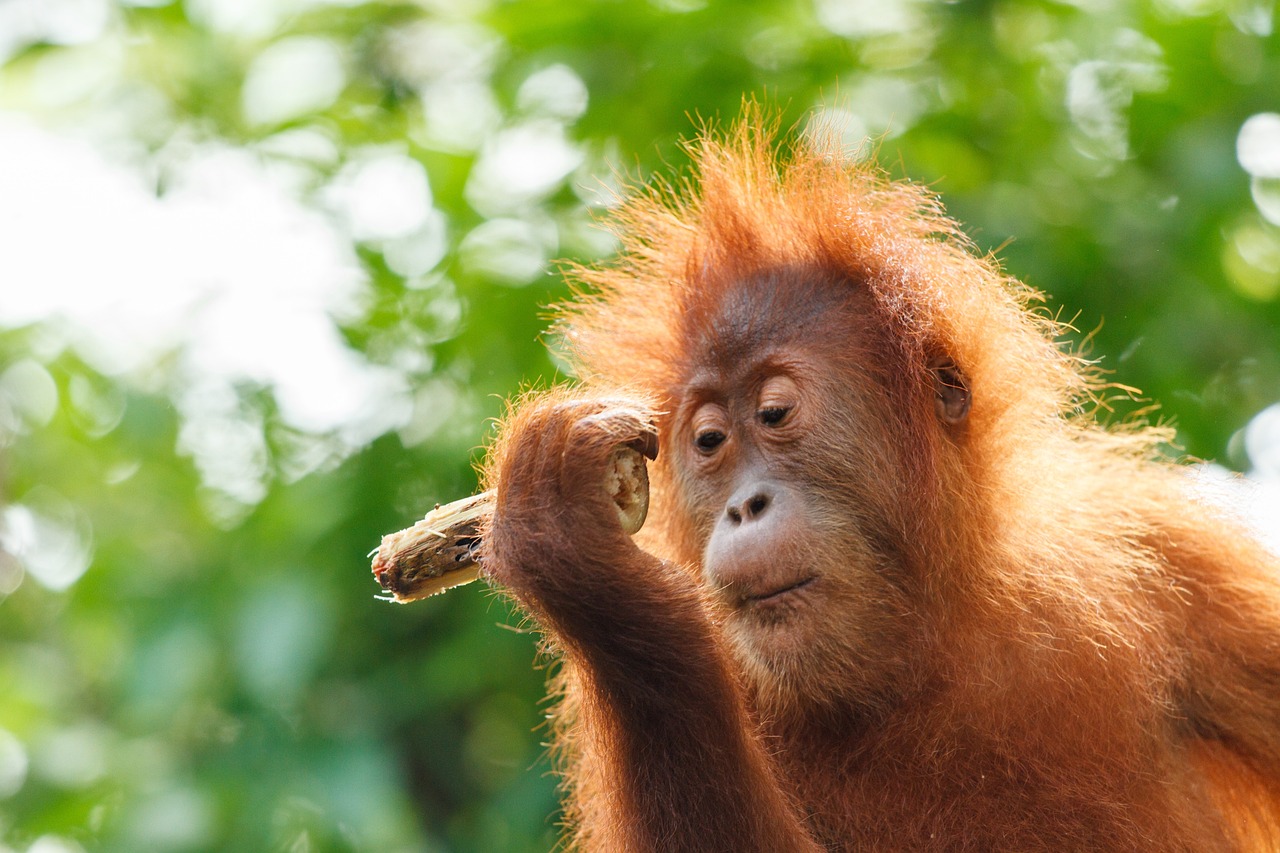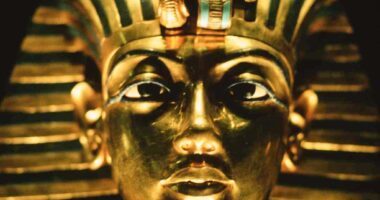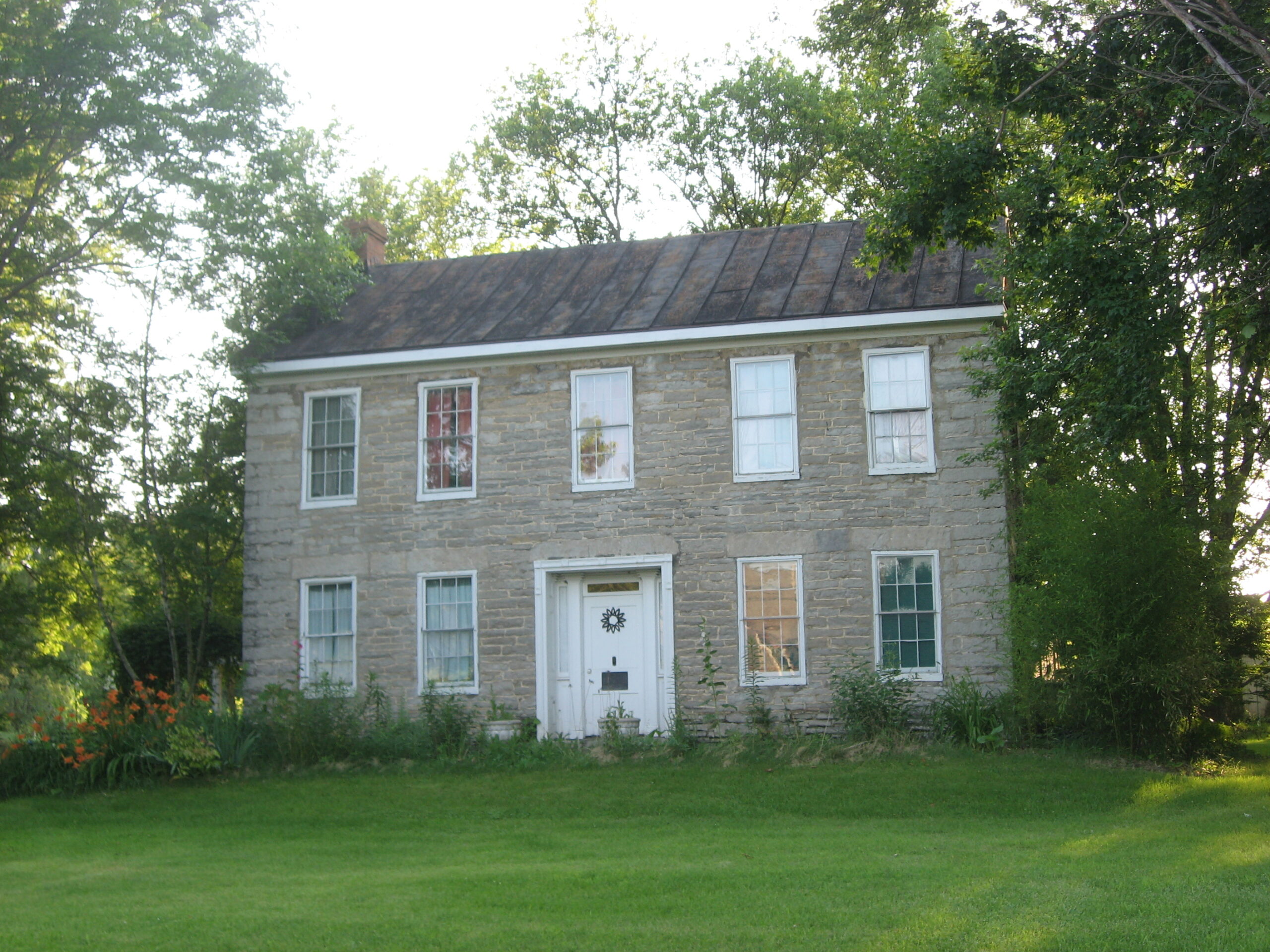The Columbus Zoo and Aquarium’s great ape family is growing by two—and providing more hope for the future of two very rare species.
For the first time at the Zoo in over 60 years, the Animal Care team is preparing to welcome the birth of a baby Bornean orangutan! To add to the excitement, the Columbus Zoo is also expecting the birth of a baby bonobo. This baby will be the first bonobo born in the United States in three years and the first bonobo born at the Columbus Zoo since 2016.
Orangutan, Khali, and bonobo, Faith, are entering the later stages of their pregnancies and are expected to give birth to their babies in late fall 2023. The gestational period for these great apes is only slightly shorter than humans’ at approximately 8 months.
In early spring 2023, the Columbus Zoo’s Animal Care team noted some physical changes in 17-year-old female, Khali, approximately two weeks after she and 30-year-old Sulango, were observed breeding. The visible swelling continued and became quite significant after a month, indicating she was highly likely to be pregnant.
Around the same time, keepers were also monitoring 18-year-old bonobo, Faith, for pregnancy after she had been observed breeding with 19-year-old male bonobo, Gander. As bonobos are humans’ closest living relatives, sharing 98.7% of the same DNA, a human pregnancy test was administered and showed a positive result.
Thanks to the incredible bond they share with their care team, Khali and Faith voluntarily participated in ultrasound imaging that confirmed their pregnancies. They continue to participate in regular ultrasound imaging, which has enabled staff to monitor the babies’ development. To ensure the best monitoring possible, the Zoo’s Animal Health team is also collaborating with Dr. Eric Hostnik, a highly skilled veterinary radiologist with The Ohio State University’s College of Veterinary Medicine and founding member of the Zoo, Exotic, Wildlife Diagnostic Imaging Society (ZEWDIS). The ultrasound imaging has shown that the babies are developing well. Ultrasound imaging is not used to determine the sex of the babies while in the womb, and the team will determine the sex of the babies after they are born. The Zoo’s Animal Care and Animal Health teams will continue to monitor both mothers closely, particularly during the later stages of their pregnancies.
These upcoming births are also exciting for the significant contributions they are making for the conservation of these species. Orangutans are listed as critically endangered on the International Union of Conservation of Nature (IUCN) Red List of Threatened Species™ while bonobos are classified as endangered.
“We are excited to share this news, and I want to recognize and thank to our dedicated and professional Animal Care and Animal Health teams. Khali and Faith are both doing well. These remarkable births will have a significant impact on the future of their species, both in professional care and in the wild,” said Tom Schmid, president and CEO of the Columbus Zoo and Aquarium.
The pairing of Khali and Sulango was recommended by the Species Survival Plan® (SSP), a program coordinated by the Association of Zoos and Aquariums (AZA) to maintain genetic diversity of threatened and endangered species in professional care. First-time orangutan mother, Khali, who was born at the Toledo Zoo, has lived at the Columbus Zoo since 2018. Sulango was born at ZooTampa and sired two offspring at Zoo Atlanta before he arrived at the Columbus Zoo in 2013. Due to having the longest interbirth interval (approximately 6-9 years) and infant dependency of any non-human mammal, orangutans do not tend to have many babies. The females may produce 4-5 offspring throughout their lifetime, making each birth particularly important.
Faith was born at the Milwaukee County Zoo and arrived at the Columbus Zoo in 2021. She had one baby prior to moving to Columbus and is an experienced mother. Gander is likely the father of Faith’s baby since they were paired together, though this will be confirmed through a DNA test that will be performed after the baby is born. Bonobos live in a fission-fusion society, which means the size of the Zoo’s bonobo group (13 individuals) in a given area changes throughout the day. Sometimes, many of the bonobos will be together in one place (fusion), and other times, they split into small groups (fission). With paternal lineages distantly linked to wild bonobos, both Faith and Gander are genetically valuable. A baby would greatly contribute to the genetic diversity of bonobos in zoos.
Gander has also gained notoriety through his mother, Unga, who—along with another female bonobo, Kosana—became a part of history when the plane that was transferring them to their new homes (the Columbus Zoo and the Milwaukee County Zoo) was suddenly diverted to Gander, Newfoundland after the tragic terrorist attacks on September 11, 2001. During this unplanned, five-day layover, the people of Gander helped take great care of the bonobos and the staff who were traveling with them. Unga and Kosana’s unique story is also referenced in the Broadway musical, “Come From Away,” which tells the true story of the events in Gander when more than 30 planes were diverted there after the attacks. The Columbus Zoo team was so grateful for the community’s response in Gander that when Unga became pregnant two years later and delivered her first offspring at the Columbus Zoo in December 2003, the team named him Gander in honor of the city that had shown so much compassion.
Bornean Orangutans
Found in the Malaysian and Indonesian portions of the island of Borneo, Bornean orangutans are the largest arboreal mammal. The population of orangutans is estimated to be approximately 70,000-100,000 individuals, and over the past 20 years alone, their habitat has declined by more than 80 percent mostly due to logging and the clearing of habitat in oil palm plantations. “Orangutan” means “person of the forest” in the Indonesian and Malaysian languages, and orangutans share approximately 97 percent of the same DNA as humans.
Since 1995, the Columbus Zoo has contributed more than $307,000 to conservation projects benefiting orangutans in their native range. The Columbus Zoo has also teamed up with HUTAN-Kinabatangan Orangutan Conservation Programme to work together to educate local communities to improve the coexistence between orangutans and agricultural areas like oil palm plantations while improving habitats. In 2015, the Columbus Zoo awarded Marc Ancrenaz from Project HUTAN with the Zoo’s prestigious Commitment to Conservation Award, which included a $50,000 grant to help fund additional work to help protect the species.
Bonobos
In addition to helping orangutans, since 1994, the Columbus Zoo has contributed a total of over $1 million in support of efforts benefiting bonobos. The Columbus Zoo specifically works with conservation partners such as Lola ya Bonobo, the world’s only sanctuary for bonobos. The Zoo’s inaugural Commitment to Conservation Award and grant was awarded in 2013 to Lola ya Bonobo’s founder, Claudine André. Claudine and her Congolese staff have rescued and cared for hundreds of bonobos and in 2010, they organized the first-ever successful reintroduction of bonobos back to their native range.
Bonobos are also the least-known great ape species. In fact, the Columbus Zoo is one of only eight facilities in North America that currently house bonobos, the last ape species discovered by western scientists in 1929.
Bonobo societies are female-led, making them the only matriarchal great ape species. Known for their peaceful nature, bonobos demonstrate a rare behavior in the animal kingdom. Scientists have documented bonobos (both in zoos and in their native range) openly and willingly sharing food and shelter with other bonobos unfamiliar to them.
The major threats to bonobo populations are primarily habitat destruction through logging and bush meat hunting. Only 5,000-20,000 bonobos are estimated to be living in a very small range in the equatorial forests of the Democratic Republic of Congo (DRC), which makes protecting them more critical.
Guests can currently view both Khali and Sulango in the Zoo’s Australia and the Islands region with 49-year-old female orangutan, Dumplin, who is one of the oldest Bornean orangutans living at a zoo in the United States.
Due to construction while the renovations of the bonobos’ indoor habitat continues, the bonobos recently moved to one of the Zoo’s behind the scenes primate buildings and are unable to be viewed by guests at this time. The bonobos’ temporary home provide them access to an outdoor area, indoor living spaces, and plenty of enrichment, keeping their health and wellbeing in mind. Consisting of additional rooms and activity areas, increased HVAC capacity, and new features to help with training for participation in voluntarily medical care, the renovated indoor bonobo habitat will provide ample space and updates so the bonobos can play, learn, and continue to thrive in their family groups. The bonobo habitat is scheduled to reopen in late spring 2024.
For additional updates about the Columbus Zoo’s conservation initiatives, participation in projects such as the Great Ape Heart Project, events, and more, be sure to follow the Zoo’s social media accounts on Facebook, Instagram, X, and TikTok, and visit us at ColumbusZoo.org.
Source: Columbus Zoo and Aquarium; Image by Steffen Zimmermann from Pixabay










